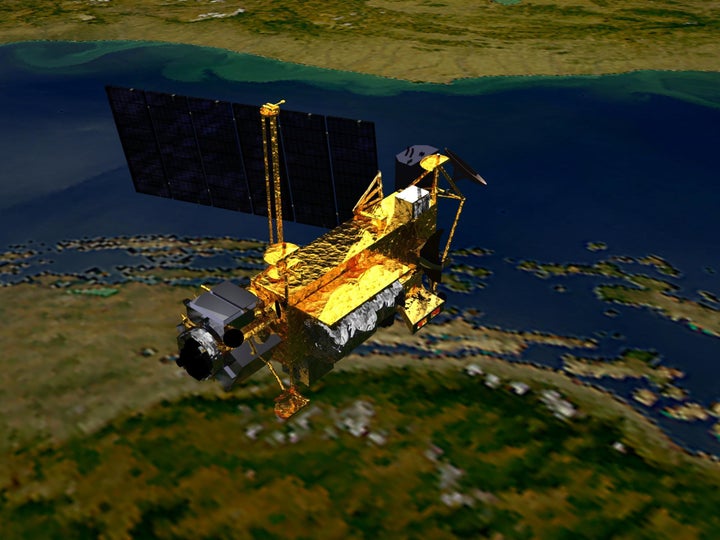
You may have heard that there's a one in 3,200 chance that you could get hit by space junk on Friday, when NASA's six-ton UARS (Upper Atmosphere Research Satellite) is expected to re-enter the Earth's atmosphere and hits Earth.
That's the number from a report by NASA's Orbital Debris Program Office that has been circulating. But according to Scientific American and NBC News correspondent Tom Costello, it's not entirely accurate.
SCROLL DOWN FOR AN IMPORTANT UPDATE
That stat has been erroneously reported as the odds that any particular person (say, me) will be hit by UARS debris. In actuality, my odds of being struck down by UARS on Friday are about 1 in 21 trillion, since the risk is spread across almost all of Earth’s 6.7 billion inhabitants.
But if you live in North America, you needn't worry: according to the latest update from NASA, the UARS is expected to re-enter the Earth's atmosphere on Friday afternoon Eastern Daylight Time, and the satellite will not be over North American during that time.
What is space junk?
Orbital debris, or "space junk," is anything manmade that's orbiting around the Earth and is no longer being used, according to NASA. This includes old launch vehicles, spacecraft and even flecks of paint.
NASA says that there are over 22,000 objects of space debris that are 4 inches or larger. There are tens of millions of particles that are under .4 inches, however.
When in low-Earth orbit, space junk is flying between 4 to 5 miles per second. According to CNN, when they reach the Earth's atmosphere, they slow down significantly, although they can still travel at up to 100 miles per hour.
In 1979, parts of the space station Skylab landed in Western Australia and the Indian Ocean.
Has anyone ever been hit by space junk?
According to NPR, Lottie Williams of Tulsa, Oklahoma, is the only person to have ever actually been hit by space junk. In 1997, she was hit on the shoulder by a piece of what was thought to be the Delta II rocket.
Williams told Fox News that she felt a tapping on her shoulder while she was walking in a park early one morning, but when she turned around, there was nobody behind her.
"The weight was comparable to an empty soda can," Williams told FoxNews.com. "It looked like a piece of fabric except when you tap it, it sounded metallic."
UPDATE: September 23, 11:55 a.m. EDT
NASA Friday morning said that because the satellite has slowed, the latest prediction of when the satellite will make re-entry is now late Friday or early Saturday Eastern Standard Time. There is also now a small chance -- rather than no chance -- of space junk landing in the United States.
Solar activity is no longer the major factor in the satellite's descent. Rather, its orientation apparently has changed, and that's slowing its fatal plunge.
Late Friday morning, NASA cautioned there's now a low probability any surviving debris will land in the United States. Earlier this week, NASA said North America would be in the clear.
NASA said that the agency will have a better idea of the location of re-entry in the next 12 to 18 hours.
Check back for updates.
WATCH: Animated analysis of the UARS orbital and re-entry pattern:
---
